Until the end of the 15 e century, medieval illuminators used for the intensity of its purplish blue, a dye known as folium . Fallen into oblivion, access to medieval manuscripts has recently enabled Portuguese scientists to find traces of it and resuscitate its composition.
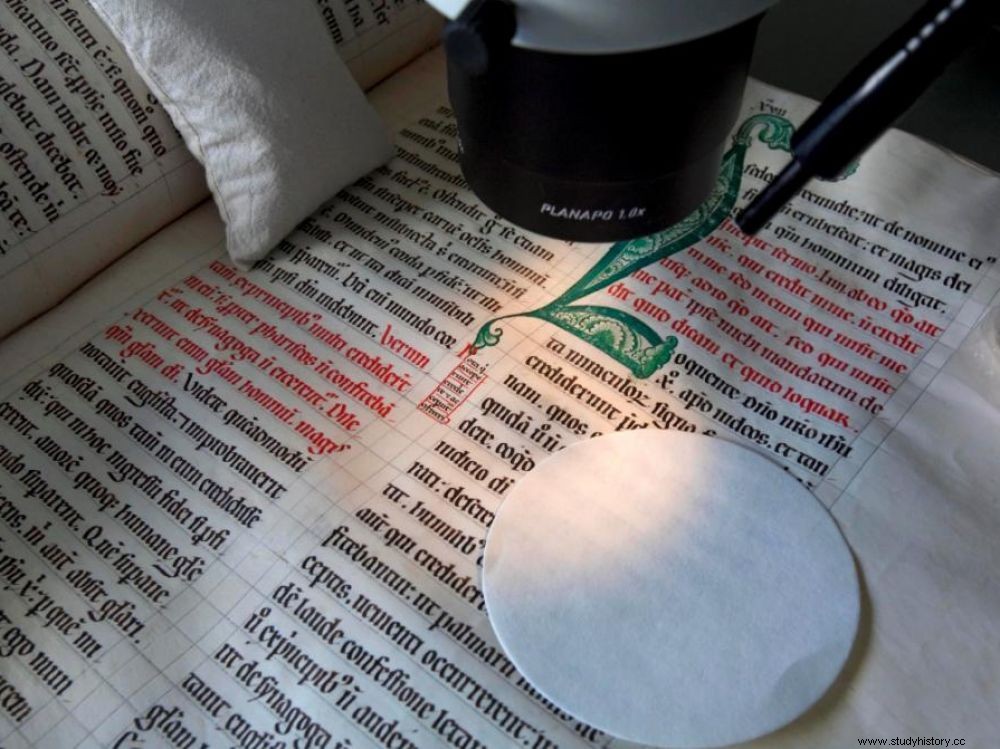
An illuminated manuscript from the Middle Ages and the use of a forgotten blue pigment.
Throughout the Middle Ages, to illuminate the manuscripts with a deep blue, the monks in the scriptorium used indigo, taken from a plant. But also - and it is less known - a particular blue called folium . Disappeared from color recipes from the 16th century, its name was no longer mentioned in treatises. A team of Portuguese scientists, however, managed to resurrect it based on a 15th century text devoted to the manufacture of dyes:the researchers found its main ingredient, a plant of Chrozophora tinctoria L. A. Juss, as reported by a study published in the journal Science Advances .
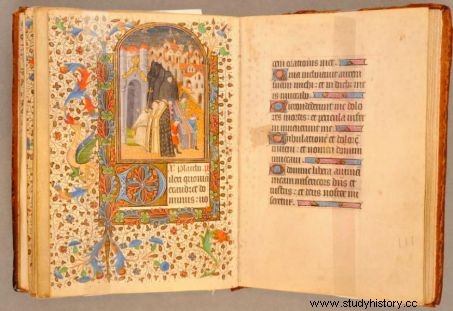
A Book of Hours and blueprints from the collection of the National Palace of Mafra (Portugal). ©Maria Joao Melo et alii.
Find recipes for medieval dyes
Until then, the blue color structure of the folium had remained elusive, a mystery that aroused the curiosity of a team of researchers from the New University of Lisbon. "One of the study themes of our laboratory is precisely to analyze medieval texts to identify the colors used in illuminations and reproduce the recipes" , explains Maria João de Melo, responsible for this work, joined by Sciences et Avenir. Thus, by exploring various works including the Theophilus, from the 12th century, or the Manuscrito de Montpellier liber diversarum arcium of the 14th century, Portuguese scientists came across a work dated to the 15th century titled:The book on how to make all the colors to illuminate books .
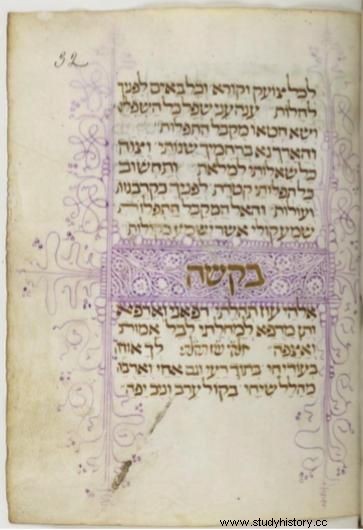
"O livro de como se fazem as cores das tintas todas para iluminar os livros" (LKSK) (sec. XV), in the Judeo-Portuguese version. © Maria Joao Melo et alii
A manuscript written in Hebrew characters, medieval Portuguese used at the time by the Judeo-Lusitanian community (Sefarads), which, persecuted, will be expelled from the kingdom of Portugal at the end of the 15th century by the Inquisition. This scholarly document gave many clues about this Euphorbiaceae , described as a Mediterranean plant widespread as far as North Africa, as well as Southwest and Central Asia.
On the trail of Chrozophora tinctoria
Throughout the Middle Ages, to illuminate the manuscripts with a deep blue, the monks in the scriptorium used indigo, taken from a plant. But also - and it is less known - a particular blue called folium . Disappeared from color recipes from 16 e century, his name was no longer mentioned in the treaties. However, a team of Portuguese scientists managed to resurrect it based on a text from the 15 e century devoted to the manufacture of dyes:researchers have found its main ingredient, a plant of Chrozophora tinctoria L. A. Juss, as reported by a study published in the journal Science Advances .

A Book of Hours and blueprints from the collection of the National Palace of Mafra (Portugal). ©Maria Joao Melo et alii.
Find recipes for medieval dyes
Until then, the blue color structure of the folium had remained elusive, a mystery that aroused the curiosity of a team of researchers from the New University of Lisbon. "One of the study themes of our laboratory is precisely to analyze medieval texts to identify the colors used in illuminations and reproduce the recipes" , explains Maria João de Melo, responsible for this work, joined by Sciences et Avenir. Thus, by exploring various works including the Theophilus, of 12 e century, or the Manuscrito de Montpellier liber diversarum arcium of the 14 e , Portuguese scientists came across a collection dated to the 15 th century entitled:The book on how to make all the colors to illuminate books .

"O livro de como se fazem as cores das tintas todas para iluminar os livros" (LKSK) (sec. XV), in the Judeo-Portuguese version. © Maria Joao Melo et alii
A manuscript written in Hebrew characters, medieval Portuguese used at the time by the Judeo-Lusitanian community (Sefarads), which, persecuted, will be expelled from the kingdom of Portugal at the end of the 15 e century by the Inquisition. This scholarly document gave many clues about this Euphorbiaceae , described as a Mediterranean plant widespread as far as North Africa, as well as Southwest and Central Asia.
On the trail of Chrozophora tinctoria
In the precious document of the 15 e century, it was thus a question of a small common green-silver plant baptized Chrozophora tinctoria , "which a sufficiently precise description made it possible to link to the folium, explains Paula Nabais, co-signer of the article. From then on, we knew what the plant, characterized by a fruit with three capsules, looked like, the season during which it grew and its favorite places, namely dry, calcareous soils, at the edge of cultivated fields. All we had to do was go find him!" , continues the specialist.
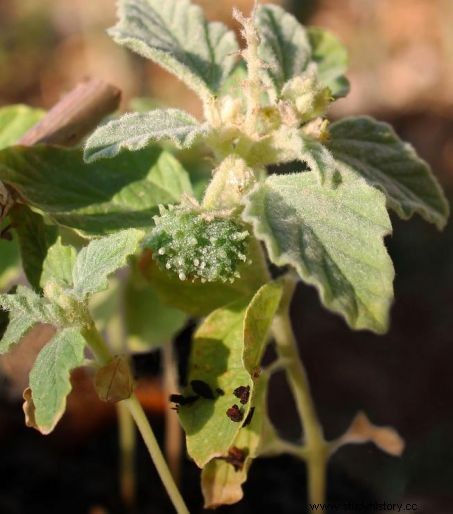
The Chrozophora tinctoria L. A. Juss plant found in southern Portugal. © Paula Nabais et alii / Nola
This was done under the aegis of botanist Adelaïde Clemente, a specialist in Portuguese flora who had her own idea of the most appropriate area to find it. This is how one fine morning in July 2016, near the dazzling white-walled city of Monsaraz, in southern Portugal, the small weedy plant was found on the edge of a path! Brought back to the university laboratory, the researchers were then finally able to analyze its molecular structure and solve a mystery from the most distant Middle Ages.
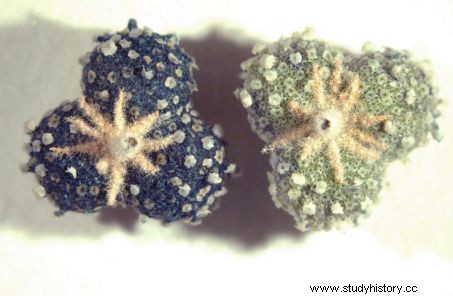
Fruits of Chrozophora tinctoria from which the blue dye was extracted. ©Paula Nabais / Nola
In Lisbon, the chemical analysis carried out using the plant Chrozophora tinctoria has in fact made it possible to isolate a new molecule, chrozophoridine. Used in ancient times, it was used to produce this beautiful blue dye so popular with illuminators. "It was therefore not part of the anthocyanins - another source of blue dye present in many blue flowers and fruits -, as we might have thought until then, nor was it related to indigo, the dye most stable known natural blue" , says Maria João de Melo.
What we know about the use of folium
In medieval times, the blue-violet colors extracted from the plant Chrozophora tinctoria were stored on scraps of fabric using a very old technique. Stored on pieces of fabric, often hemp cloth, the color extracts could thus easily be preserved to be transported to the workshops of the illuminators, in the various scriptoria monastics.
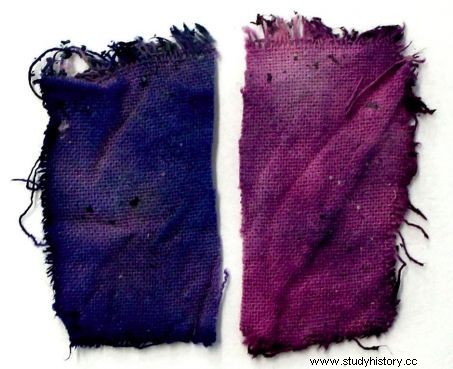
Folium-soaked fabrics following the medieval recipe. ©Paula Nabais / Nola
It was then enough for the monks to soak these fragments of fabric in a little water, to obtain the color to be diluted. "This one was next tempered, mixed with a binder, and we thus obtained for illumination fine and very vivid dyes of tone" , writes Bernard Guineau, specialist in medieval archaeology, materials and color. A type of this folium in the name of sunflower was still produced in the 19 e century in the south of France in the region of Grand-Gallargues, today Gallargues-le-Montueux, in the department of Gard. A production apparently intended for the Dutch market to color cheeses!
